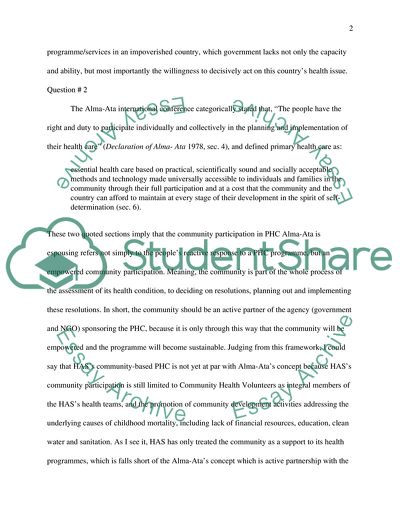Cite this document
(Reducing Mortality: Albert Schweitzers Integrated System Assignment Example | Topics and Well Written Essays - 1500 words, n.d.)
Reducing Mortality: Albert Schweitzers Integrated System Assignment Example | Topics and Well Written Essays - 1500 words. https://studentshare.org/health-sciences-medicine/1738917-international-health-and-primary-health-care
Reducing Mortality: Albert Schweitzers Integrated System Assignment Example | Topics and Well Written Essays - 1500 words. https://studentshare.org/health-sciences-medicine/1738917-international-health-and-primary-health-care
(Reducing Mortality: Albert Schweitzers Integrated System Assignment Example | Topics and Well Written Essays - 1500 Words)
Reducing Mortality: Albert Schweitzers Integrated System Assignment Example | Topics and Well Written Essays - 1500 Words. https://studentshare.org/health-sciences-medicine/1738917-international-health-and-primary-health-care.
Reducing Mortality: Albert Schweitzers Integrated System Assignment Example | Topics and Well Written Essays - 1500 Words. https://studentshare.org/health-sciences-medicine/1738917-international-health-and-primary-health-care.
“Reducing Mortality: Albert Schweitzers Integrated System Assignment Example | Topics and Well Written Essays - 1500 Words”. https://studentshare.org/health-sciences-medicine/1738917-international-health-and-primary-health-care.


